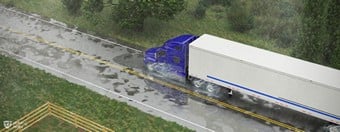From the coastal and forested areas of the west to the mountainous terrain of the Cascades, you’ll see a good mix of terrain as you drive in Oregon. If you add the Double and Triple Trailer endorsement to your Oregon Commercial Driver’s License (CDL), you’ll unlock valuable new marketability and earning potential in the transport industry! This endorsement permits you to take on more types of transport jobs and immediately elevates you in the market. To get started, you’ll need to pass a 20-question multiple-choice knowledge test with a score of 80% (16 correct answers). Since this is an addition to your CDL, you’ve already done the heavy lifting. Once you pass this knowledge test, you’ll receive the “T” endorsement on your CDL, authorizing you to pull two or three trailers (where allowed) (Oregon CDL Handbook 2026).
In the Beaver State, you must be at least 18 years of age to add this certification to your CDL, but the age requirement to travel across state lines is federally mandated at 21 or older. Triple trailers are indeed allowed in Oregon; however, state law prohibits exceeding a maximum length of 105 feet for any combination vehicle. Double and triple trailers are used throughout Oregon for the transport of timber products (lumber, plywood, and paper), agricultural products (especially fruits, vegetables, nuts, wines, and dairy), technology and electronics (Portland is a major hub), manufactured goods and machinery, and seafood from the Pacific Ocean coastline. So, how can you best study for this test?















